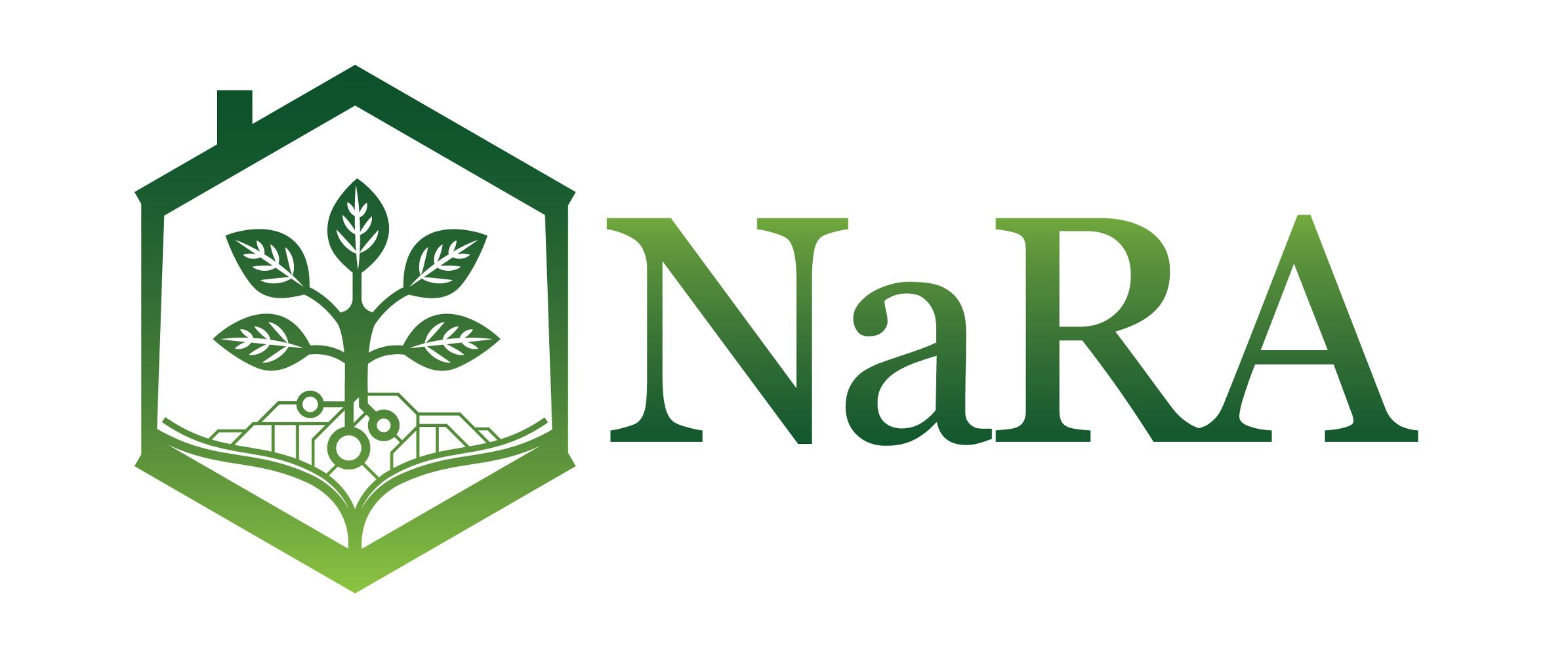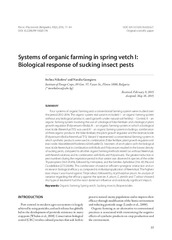Systems of organic farming in spring vetch I: Biological response of sucking insect pests
Sistemi organske proizvodnje obične grahorice I: Biološki odgovor insekata koji se hrane biljnim sokom
| dc.contributor.author | Nikolova, Ivelina | |
| dc.contributor.author | Georgieva, Natalia | |
| dc.date.accessioned | 2015-11-08T10:36:16Z | |
| dc.date.available | 2015-11-08T10:36:16Z | |
| dc.identifier.uri | http://arhiva.nara.ac.rs/handle/123456789/1432 | |
| dc.description.abstract | Four systems of organic farming and a conventional farming system were studied over the period 2012-2014. The organic system trial variants included: I – an organic farming system without any biological products used (growth under natural soil fertility) – Control; II – an organic farming system involving the use of a biological foliar fertilizer and a biological plant growth regulator (Polyversum+Biofa); III – an organic farming system in which a biological insecticide (NeemAzal T/S) was used; IV – an organic farming system including a combination of three organic products: the foliar fertilizer, the plant growth regulator and the bioinsecticide (Polyversum+Biofa+NeemAzal T/S). Variant V represented a conventional farming system in which synthetic products were used in combination (foliar fertilizer, plant growth regulator and insecticide: Masterblend+Flordimex 420+Nurelle D). Treatment of vetch plants with the biological insecticide NeemAzal in combination with Biofa and Polyversum resulted in the lowest density of sucking pests, compared to all other organic farming methods tested (i.e. without NeemAzal, with NeemAzal alone, and its combination with Biofa and Polyversum). The greatest reduction in pest numbers during the vegetation period in that variant was observed in species of the order Thysanoptera (36.0-41.4%), followed by Hemiptera, and the families Aphididae (31.6-40.3%) and Cicadellidae (27.3-28.6%). This combination showed an efficient synergistic interaction and an increase in biological efficacy as compared to individual application of NeemAzal. The highest toxic impact was found against Thrips tabaci, followed by Acyrthosiphon pisum. An analysis of variance regarding the efficacy against the species A. pisum, E. pteridis and T. tabaci showed that type of treatment had the most dominant influence and statistically significant impact. | en |
| dc.description.abstract | Proučavana su četiri sistema organske proizvodnje i jedan klasičan sistem u periodu od 2012 do 2014. Varijante organske proizvodnje su bile: I – sistem organske proizvodnje bez upotrebe bioloških proizvoda (uslovi prirodne plodnosti zemljišta) – kontrola; II – sistem organske proizvodnje sa upotrebom folijarnog biološkog đubriva i biološkog regulatora rasta (Polyversum+Biofa); III – sistem organske proizvodnje sa upotrebom biološkog insekticida (NeemAzal T/S); IV – sistem organske proizvodnje sa upotrebom kombinacije tri organska proizvoda: folijarnog đubriva, regulatora rasta i bioinsekticida (Polyversum+Biofa+NeemAzal T/S). Varijanta V predstavljala je konvencionalni sistem proizvodnje u kom je korišćena kombinacija sintetičkih proizvoda (folijaro đubrivo, regulator rasta i insekticid: Masterblend+Flordimex 420+Nurelle D). Tretman grahorice biološkim insekticidom NeemAzal u kombinaciji sa preparatima Biofa i Polyversum dao je najmanju gustinu štetočina koje se hrane isisavanjem biljnog soka u poređenju sa ostalim ispitivanim metodama (bez NeemAzal, samo sa NeemAzal i u kombinaciji sa Biofa i Polyversum). Najizrazitije smanjenje brojnosti štetočina tokom vegetacije u toj varijanti zabeležen je kod vrsta iz redova Thysanoptera (36,0-41,4%) i Hemiptera, kao i familija Aphididae (31,6-40,3%) i Cicadellidae (27,3-28,6%). Ta kombinacija je pokazala efikasno sinergično delovanje i povišenu biološku efikasnost u poređenju sa primenom bioinsekticida pojedinačno. Najsnažniji toksični uticaj zabeležen je kod Thrips tabaci, kao i kod Acyrthosiphon pisum. Analiza varijanse za efikasnost protiv vrsta A. pisum, E. pteridis i T. tabaci pokazala je da je tip tretmana imao dominant i statistički značajan uticaj. | sr |
| dc.subject | Organic farming | en |
| dc.subject | Spring vetch | en |
| dc.subject | Sucking insects | en |
| dc.subject | Biopesticides | sr |
| dc.subject | Organska proizvodnja | sr |
| dc.subject | Insekti koji se hrane biljnim sokom | sr |
| dc.subject | Biopesticidi | sr |
| dc.title | Systems of organic farming in spring vetch I: Biological response of sucking insect pests | en |
| dc.title.alternative | Sistemi organske proizvodnje obične grahorice I: Biološki odgovor insekata koji se hrane biljnim sokom | sr |
| dc.title.alternative | Obična grahorica | sr |
Files in this item
This item appears in the following Collection(s)
-
VOL 30 *No.2
http://www.pesting.org.rs/2015.php



